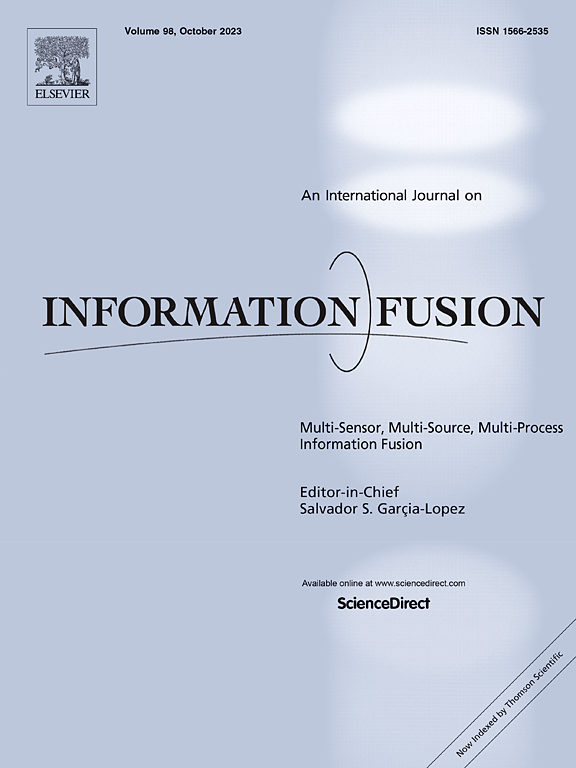SpaFusion: A multi-level fusion model for clustering spatial multi-omics data
IF 14.7
1区 计算机科学
Q1 COMPUTER SCIENCE, ARTIFICIAL INTELLIGENCE
引用次数: 0
Abstract
Cell type identification is crucial for understanding cellular organization and elucidating the mechanisms underlying disease. Recent advances in spatial multi-omics sequencing technologies have enabled the simultaneous profiling of transcriptomics and proteomics data at shared spatial coordinates, providing new opportunities for cell type identification through spatial omics clustering. However, most existing methods primarily focus on clustering spatial transcriptomics data, and effectively integrating multi-omics data for precise cell clustering remains a critical challenge. In this study, we introduce SpaFusion, a novel multi-level fusion model for clustering spatial multi-omics data. We first construct a high-order cell graph to capture more comprehensive relationships between cells. To extract latent features from both local and global perspectives, we propose an architecture that integrates graph autoencoders and transformer modules. Through a multi-level information fusion strategy, SpaFusion captures both omic-specific features and a unified consensus representation across omics. Finally, a consensus clustering strategy is introduced to facilitate information exchange across hierarchical latent representations, thereby enhancing clustering accuracy. Extensive experiments on three real-world spatial transcriptome–proteome datasets demonstrate that SpaFusion consistently outperforms state-of-the-art methods and provides valuable insights into the spatial organization of cell types and their potential roles in disease mechanisms.
SpaFusion:空间多组学数据聚类的多层次融合模型
细胞类型鉴定是理解细胞组织和阐明疾病机制的关键。空间多组学测序技术的最新进展使转录组学和蛋白质组学数据能够在共享的空间坐标上同时分析,为通过空间组学聚类进行细胞类型鉴定提供了新的机会。然而,大多数现有的方法主要集中在空间转录组学数据的聚类上,有效整合多组学数据进行精确的细胞聚类仍然是一个关键的挑战。在本研究中,我们引入了一种新的空间多组学数据聚类多级融合模型SpaFusion。我们首先构建一个高阶细胞图来捕获细胞之间更全面的关系。为了从局部和全局角度提取潜在特征,我们提出了一种集成图形自编码器和转换器模块的架构。通过多层次的信息融合策略,SpaFusion既可以捕获组特定的特性,又可以跨组获得统一的共识表示。最后,引入共识聚类策略,促进了层次潜在表示之间的信息交换,从而提高了聚类精度。在三个真实世界的空间转录组-蛋白质组数据集上进行的大量实验表明,SpaFusion始终优于最先进的方法,并为细胞类型的空间组织及其在疾病机制中的潜在作用提供了有价值的见解。
本文章由计算机程序翻译,如有差异,请以英文原文为准。
求助全文
约1分钟内获得全文
求助全文
来源期刊

Information Fusion
工程技术-计算机:理论方法
CiteScore
33.20
自引率
4.30%
发文量
161
审稿时长
7.9 months
期刊介绍:
Information Fusion serves as a central platform for showcasing advancements in multi-sensor, multi-source, multi-process information fusion, fostering collaboration among diverse disciplines driving its progress. It is the leading outlet for sharing research and development in this field, focusing on architectures, algorithms, and applications. Papers dealing with fundamental theoretical analyses as well as those demonstrating their application to real-world problems will be welcome.
 求助内容:
求助内容: 应助结果提醒方式:
应助结果提醒方式:


